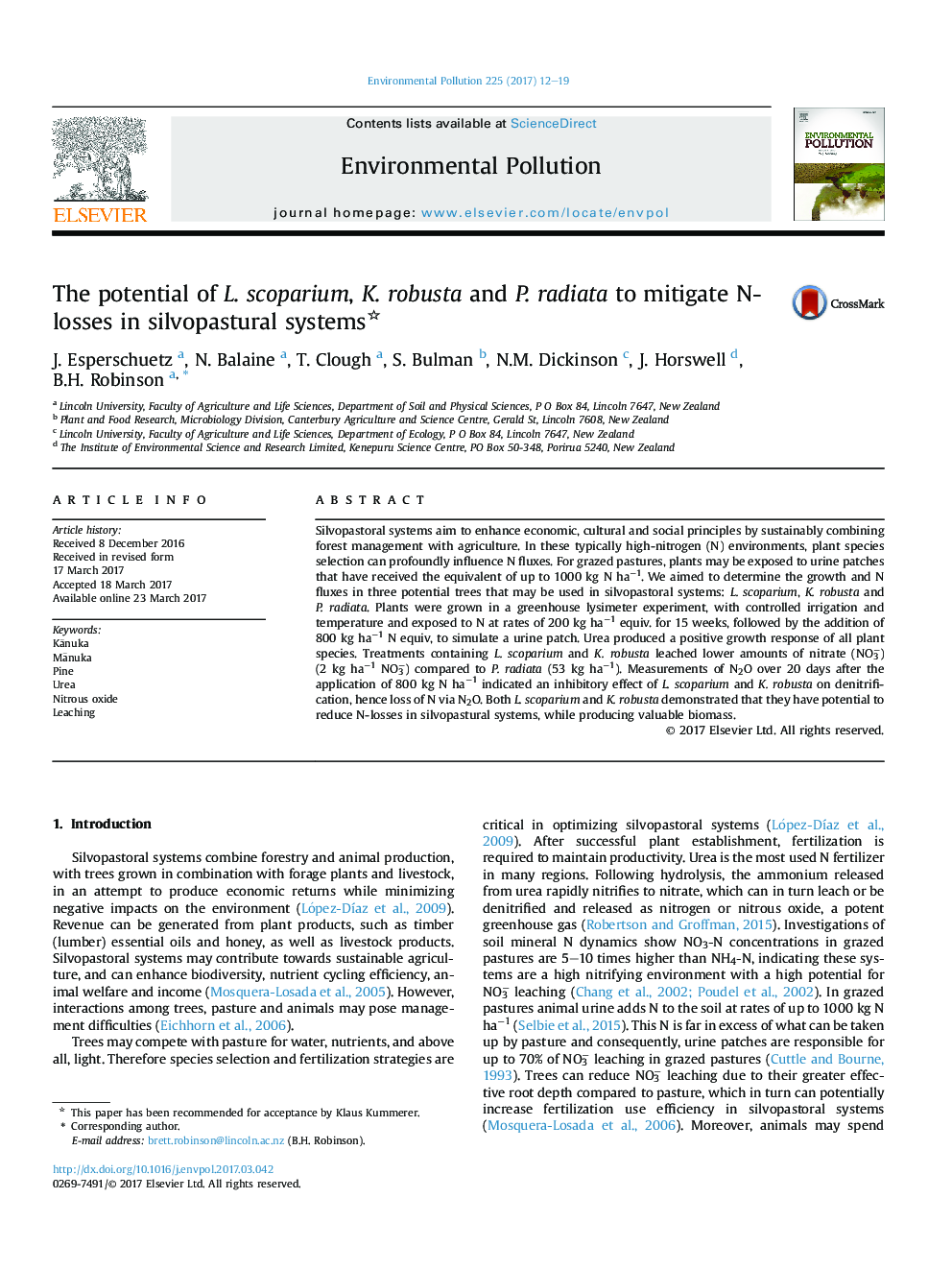| Article ID | Journal | Published Year | Pages | File Type |
|---|---|---|---|---|
| 5748906 | Environmental Pollution | 2017 | 8 Pages |
â¢Tree species selection in silvopastoral systems can minimize N losses.â¢MÄnuka, kÄnuka and pine respond positively to agricultural rates of N addition.â¢MÄnuka and kÄnuka reduce nitrate leaching after urea application compared to pine.â¢Both mÄnuka and kÄnuka inhibit denitrification.
Silvopastoral systems aim to enhance economic, cultural and social principles by sustainably combining forest management with agriculture. In these typically high-nitrogen (N) environments, plant species selection can profoundly influence N fluxes. For grazed pastures, plants may be exposed to urine patches that have received the equivalent of up to 1000 kg N haâ1. We aimed to determine the growth and N fluxes in three potential trees that may be used in silvopastoral systems: L. scoparium, K. robusta and P. radiata. Plants were grown in a greenhouse lysimeter experiment, with controlled irrigation and temperature and exposed to N at rates of 200 kg haâ1 equiv. for 15 weeks, followed by the addition of 800 kg haâ1 N equiv, to simulate a urine patch. Urea produced a positive growth response of all plant species. Treatments containing L. scoparium and K. robusta leached lower amounts of nitrate (NO3â) (2 kg haâ1 NO3â) compared to P. radiata (53 kg haâ1). Measurements of N2O over 20 days after the application of 800 kg N haâ1 indicated an inhibitory effect of L. scoparium and K. robusta on denitrification, hence loss of N via N2O. Both L. scoparium and K. robusta demonstrated that they have potential to reduce N-losses in silvopastural systems, while producing valuable biomass.
Graphical abstractDownload high-res image (295KB)Download full-size image
